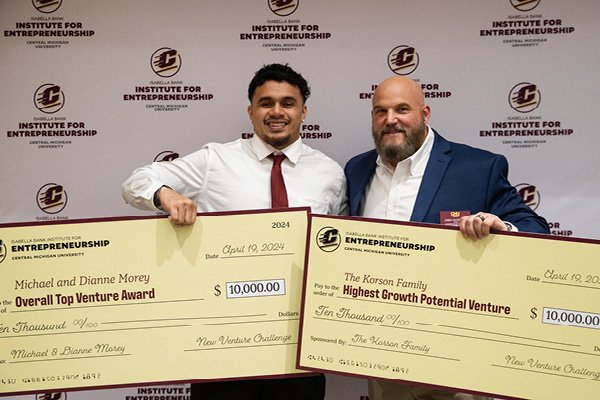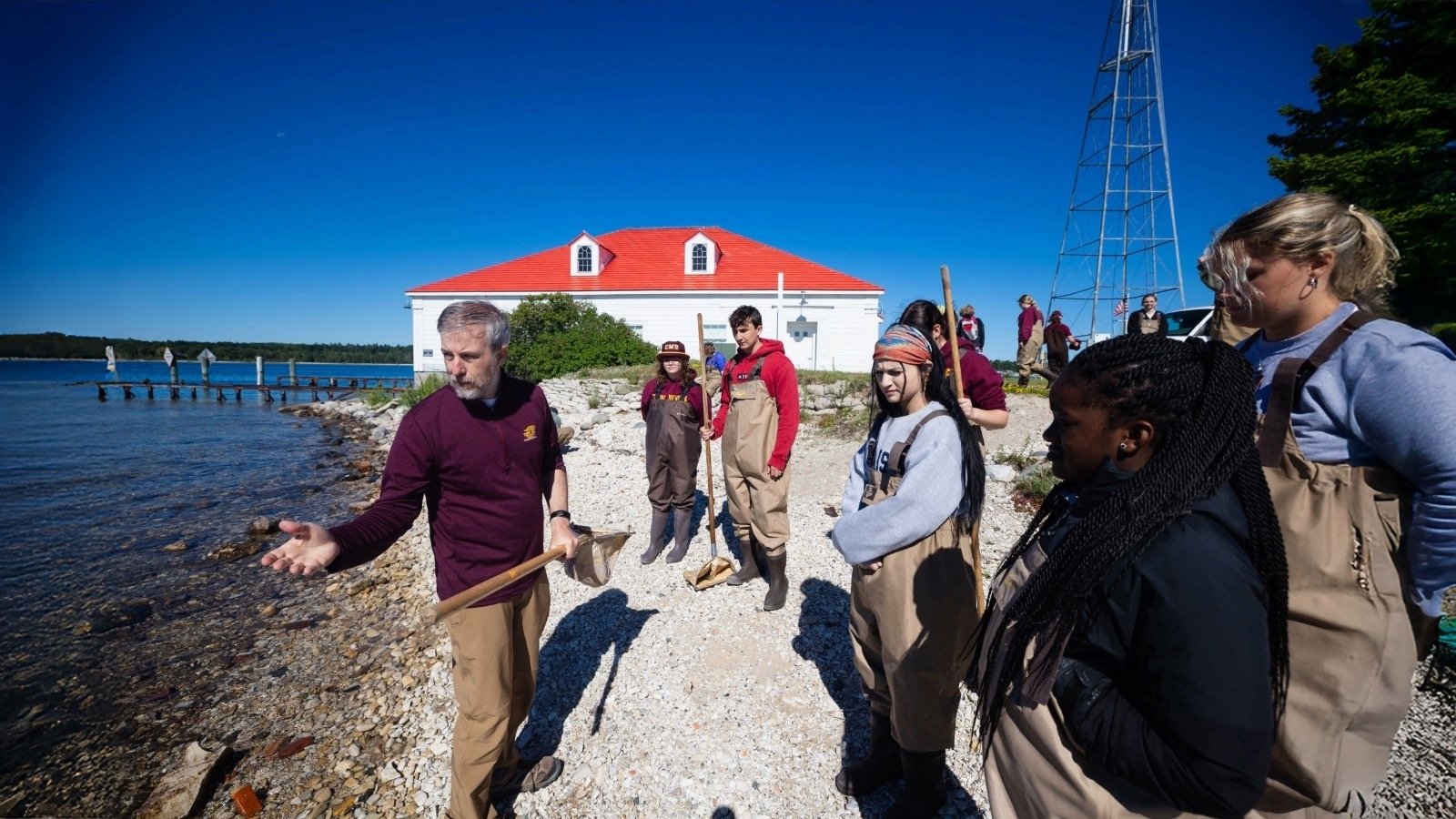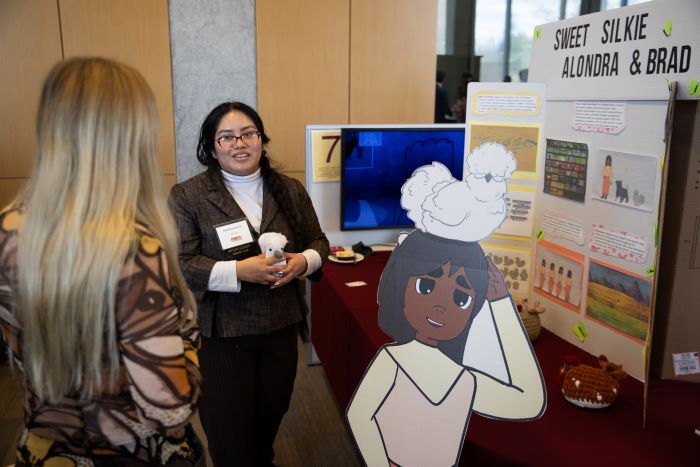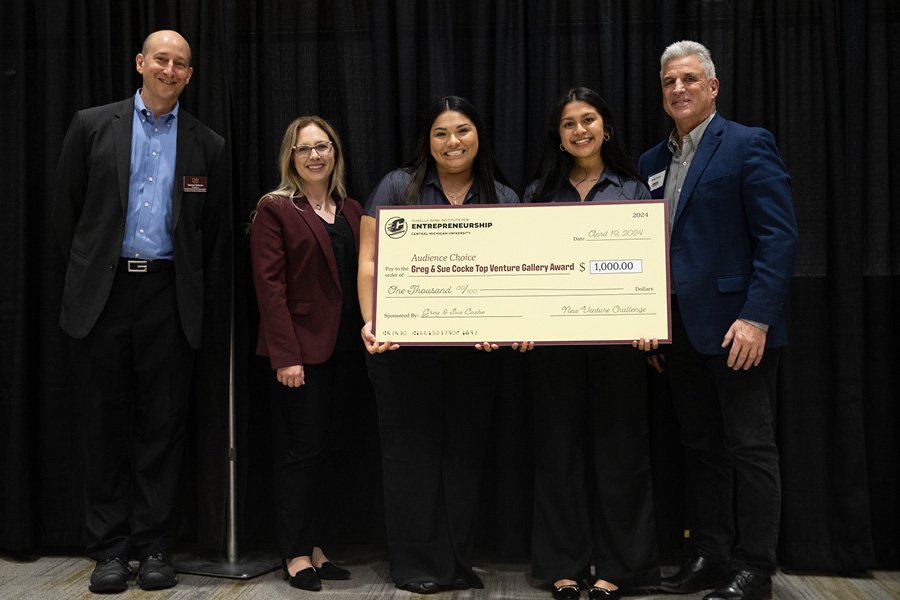
Start up
Passion. Potential. Pitches. Don't miss any of the 2025 New Venture Challenge excitement.
Tune in Friday, April 11 at 1 p.m. for great ideas and fierce competition. Then, join the judges, mentors, spectators and teams as they see who is going home with thousands of dollars in venture financing. The awards broadcast begins at 6:30 p.m. and one team will walk away as the overall best venture.
Central Michigan University’s College of Business Administration is the home of the Isabella Bank Institute for Entrepreneurship and the first Department of Entrepreneurship in the state of Michigan. We are a student-centric hub where experiential, curricular, and external entrepreneurial opportunities intersect.
Our mission is to maximize student success by fostering a campus-wide entrepreneurial mindset that promotes inter-disciplinary collaboration and the creation of new ventures.
We aim to create innovative programming, boost cross-campus and ecosystem collaboration and provide a comprehensive mentoring program.
Our institute provides extracurricular opportunities and is open to all undergraduate and graduate CMU students.
Are you interested in becoming an entrepreneur?
Every journey is unique. Explore the opportunities that interest you.
Many Michiganders enjoy sport fishing or eating tasty salmon, but how well do you know your Great Lakes fish? Kevin Pangle, Ph.D, Director of the CMU Biological Station and the Department of Biology faculty member, has been researching fish in the Great Lakes for over 15 years. More specifically, Coho salmon. He was recently awarded a new grant from the Great Lakes Fishery Trust, “Inferring source-specific Production of adult Coho salmon to Lake Michigan”. This grant will identify the best conditions to produce wild and hatchery Coho salmon.

Pangle’s research examines the balance between the number of Coho salmon produced by natural reproduction and those produced by hatcheries. One fact that surprises people is that
“Many Coho salmon aren’t born in Lake Michigan but rather in nearby streams,” Pangle said. Of the fish produced by natural reproduction, Pangle works to discover the specific stream locations where Coho salmon hatch. This information can be used to understand which streams best support Coho salmon health and a productive, reproducing population.
To answer these questions about Coho salmon, Pangle and his undergraduate and graduate student researchers use otolith chemistry. Otoliths are structures inside a fish’s ear that help balance and hearing. These inner ear structures also store the history of the fish and their prior locations because each body of water has a chemical signature captured by the otolith. “We’ve done a lot of work to figure out what the chemical signature looks like for each of those streams,” Pangle said. Researchers can learn where the largest numbers of Coho salmon are produced, and which streams have the most supportive conditions for the fish.
Pangle appreciates his collaborations with many biologists and state agencies in Michigan that are contributing to this project. Ultimately, Pangle hopes to use his approach with otolith chemistry to inform Michigan fisheries and the public about the reproduction and health of Coho salmon in Lake Michigan so we can all continue to enjoy them for many years to come.

Explore special opportunities to learn new skills and travel the world.

Present your venture and win BIG at the New Venture Challenge.

Boost your entrepreneurial skills through our workshops, mentor meetups and pitch competitions.

Learn about the entrepreneurship makerspace on campus in Grawn Hall.

Present a 2-minute pitch at the Make-A-Pitch Competition and you could win prizes and bragging rights!

Connect with mentors and faculty who are here to support the next generation of CMU entrepreneurs.

Are you a CMU alum looking to support CMU student entrepreneurs? Learn how you can support or donate to the Entrepreneurship Institute.